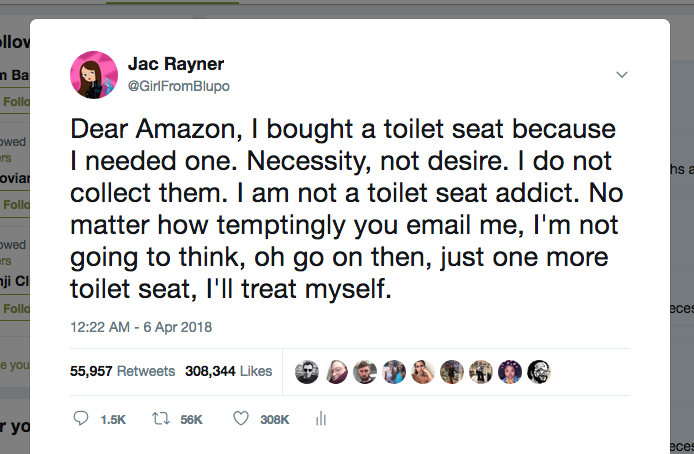The Privacy Paradox: How the Use of Data Is Affecting Email Marketers

Marketers are in the midst of a big problem: The Privacy Paradox. Consumers constantly want more of their communications with brands to be personalized and tailored to their needs. However, simultaneously, more and more people are concerned with how their personal data is being captured and used.
The problem is that marketers rely on data to provide more personalized experiences - but what kind of data should marketers be collecting and how should it be collected? Ultimately, how do we find the right balance between personalization and privacy?
Trust is King
While there are some marketers who believe revenue is the most important asset a customer can give them, the real focus should be on building a trusting relationship between your brand and consumers. If there is no trust, then money generated today will not last or grow beyond tomorrow. But trust does not happen overnight. There are so many factors and micro-interactions that lead up to a solid, trusting relationship. This is why first impressions (i.e. ads, social channels, websites, welcome emails, and more) are so important to get right.
When you build trust with a customer, they may not purchase your product or service right away, but they may share something with you that’s just as valuable - their personal information. And while it may not make you or your sales team look like this: 🤑, it’s important to remember that this is the equivalent of someone walking into a store and saying to a sales associate, “Hello! My name is John Smith. Please tell me more about your company!”
That is a type of vulnerability that so many marketers take for granted. People are very skeptical about how their information is being used, and we all know that we get way too many marketing emails already. Just because so many people still do share their personal information with brands, does not mean that marketers are necessarily entitled to it. When consumers share their personal data with us, we need to do them the service of respecting that privacy, no matter what. Personalization can be built over time, but trust is something that is very hard to build if the relationship has been damaged in the past (i.e through selling information to third-parties, continuing to email/text them when they have unsubscribed, etc.).
Sometimes Less is More
Now you’re probably thinking, “So does that mean no personalization in my marketing strategy? If we can’t collect or use their data without upsetting them, how are we going to provide a personalized experience?” That’s not necessarily the case. Depending on your industry, depth of your marketing program, and current relationship with your customers, there are many different ways to make the reader feel that the message has been tailored to their needs.
If you don’t have much (or any) data outside of your subscriber’s email address, then some clever copywriting is all you need to still make that reader feel special. Using language that highlights an exclusive offer, thanks them for their loyalty or interest in the brand, or highlights products they might like, even if it’s just because they are the most popular products in general - these are just a few examples of how to build engagement and make readers feel more connected to your brand by seeing that you are looking out for them rather than just sending more and more generic marketing emails that go unread and sent to the trash.
If you’re already gathering data outside of your subscribers’ email address, or looking to do so in the near future, the best way to utilize that data is to share it with your reader without making it feel invasive. Data points like name, city and state or zip code, product interests or purchase history are extremely valuable tools to use when it comes to building that relationship. Not necessarily always in what you do say, but additionally in what you don’t say.
For example, if you know someone lives in Atlanta, why would you send them a message letting them know about an upcoming event in Seattle? And if someone has purchased a product from your site, why would you keep recommending that same product after the purchase (all depends on the use case of course). While customers may not notice that you’re not sending them these things, they most definitely will if you do, and won’t be very appreciative of the unneeded information.

Good Marketers Mind Their Manners
But not all great marketing campaigns are about what you don’t say - in fact, most aren’t. So, what do you say to your customers when you have this great information about them that can help build that trust and bring you closer together? Well, it’s oddly similar to being a good person.
- Think about what a good friend or good host would do with that information. Usually the first thing you think of is an introduction and remembering their name. Dale Carnegie once said, “A person's name is to him or her the sweetest and most important sound in any language.” And he wasn’t wrong. Research shows that including someone’s first name in an email can improve the likelihood of open rates by 29% and unique click-through rates by 41%.
- The next natural step would be to find something in common with that individual. Maybe that has to do with their location - you have a store or an upcoming event in Atlanta! That’s great! Or you notice that they were looking for a specific product on your site. So you share some recommendations about how you could use said product, or ones that are similar that could also likely do what they’re looking for.
- And finally, after they make a purchase, the kind thing to do would be to show your appreciation for them. Offer a discount on a future purchase as a thank you for supporting your business. Or, if that’s not an option, simply send a ‘thank you’ letting them know how much you appreciate them. Things like that can go a long way!
We’re starting to see the pendulum swing more in the privacy direction lately, especially with the new iOS 15 update happening in the Fall of 2021. More and more operating systems and apps are no longer providing tracking information across devices or accounts. We know that tracking email opens for example is going to be a challenge moving forward - as it's much more difficult to make adjustments to strategies without accurate data, especially data that the email industry has been relying on for decades. However, with that we may see a shift in consumer behavior. If a consumer is fully opting into providing tracking information, email subscribers and the data from those subscribers will be more valuable than ever. Email subscribers will be a brand’s best friend and most valuable customers.
Balancing privacy and personalization will always be a struggle for marketers as they are constantly pulling us in two different directions. While everyone’s place on that spectrum may look different, finding a balance that's best for your brand and your customers will help you maximize your ROI not just today or this week, but for years to come. While it’s so easy to get caught up in instantaneous conversions, it's important to remember to play the long game. Customers that trust you will reward you for the relationship you’ve built with them.
Comments
Add A Comment